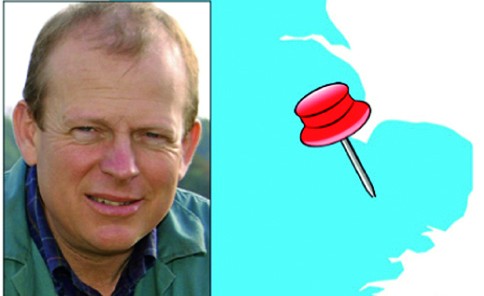Hopefully the late spring and the extreme cold of the Beast from the East are now well behind us. It has been very testing for both the pigs and those of us working outside looking after them.
Everyone should be congratulated for pulling through a winter that will live long in the memory – the only mistake I made was to return from my trip to Australia. I doubt I will ever forget the day that the bowser kept freezing up. Seing sows in the space of two weeks thriving in 36oC heat and in a -15oC wind-chill reinforced my view that pigs are amazing creatures to have come through so well, as, of course, are the people who look after them.
An upshot of the weather, in addition to staff sickness and the Easter holidays, was that I decided to postpone our blitz PRRS vaccination by a month.
An added advantage was that Nick Butler, from the vaccine manufacturer, was able to join us to help on the ‘big day’ when we managed to vaccinate about 1,200 sows, leaving very few to do. The results from adopting this vaccination strategy really have been extremely encouraging.
Following diagnosis of a strain of Leptospirosis in the herd, we changed to an appropriate vaccine that also covers Erysipelas and Parvovirus. Now that the herd is fully on the system, we have seen an encouraging uplift in performance.
Another task that got postponed was the biannual re-siting of the farrowing paddocks. I had doubts as to my sanity in adopting this plan, but the rate at which the whole team got everything shifted after weaning showed that it isn’t massively onerous. There were loaders and tractors and trailers flying in all directions, moving huts, fenders and water troughs. The old paddocks had taken a hammering this winter so will get a rest and be levelled and sown with a cover crop.
Meanwhile the hope is that piglet quality gets the uplift that we always see from a new site. The land that we move back onto in the autumn will have, in turn, benefited from a recovery period and it’s hoped that the cover crop roots and associated increased earthworm activity might mean that the land is even more free-draining next winter.
The arrival of better weather should see a drop in the rate of straw use. This will be vital, with straw in extremely short supply following last year’s wet harvest and exacerbated locally by the straw-fired power station that came on line last year.
We are hoping reduced usage in the spring will ensure our meagre stocks see us through. It has come to something when straw supplies are short in the centre of the UK’s breadbasket. The sooner that power station gets onto burning more sensible things the better.




